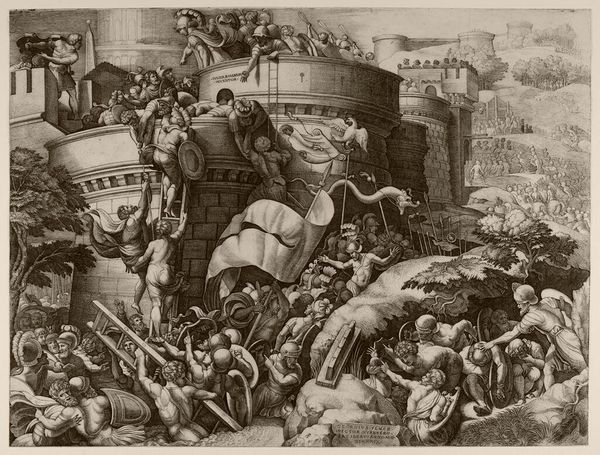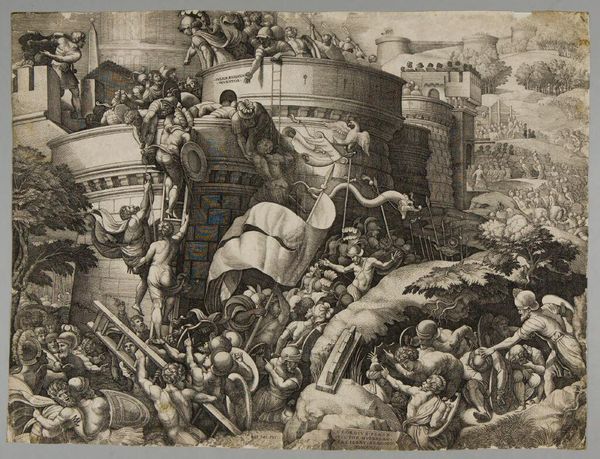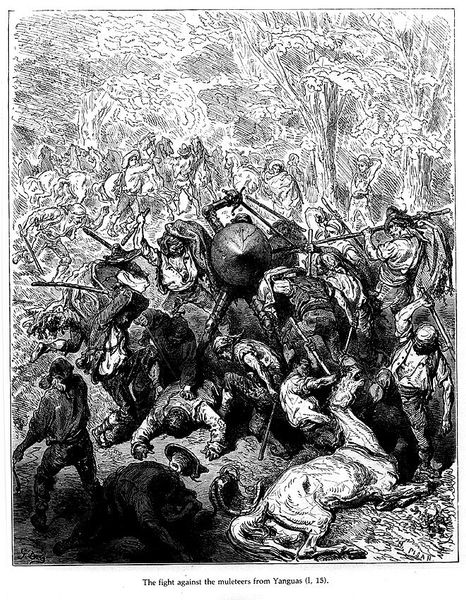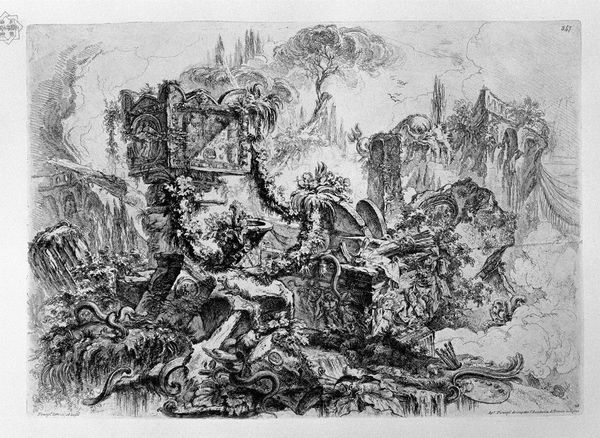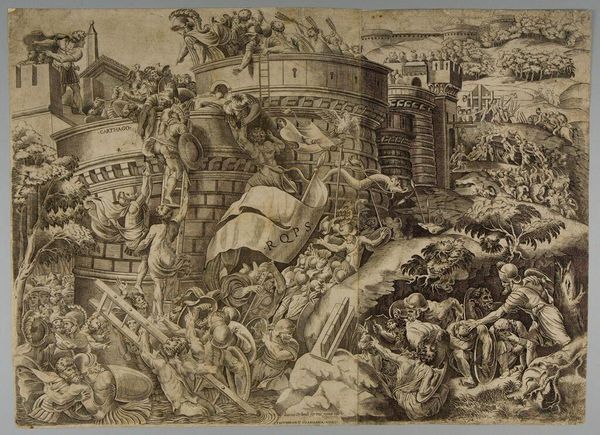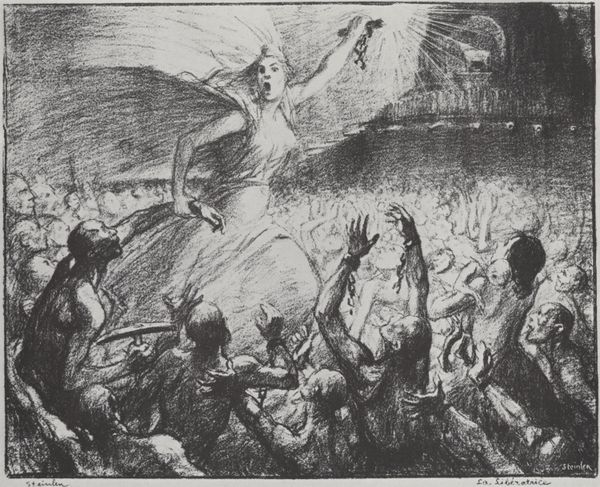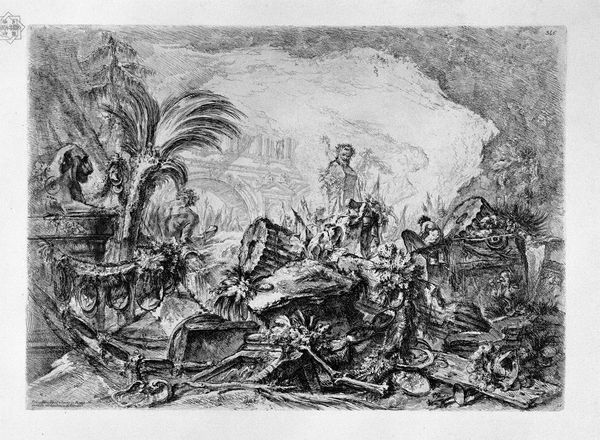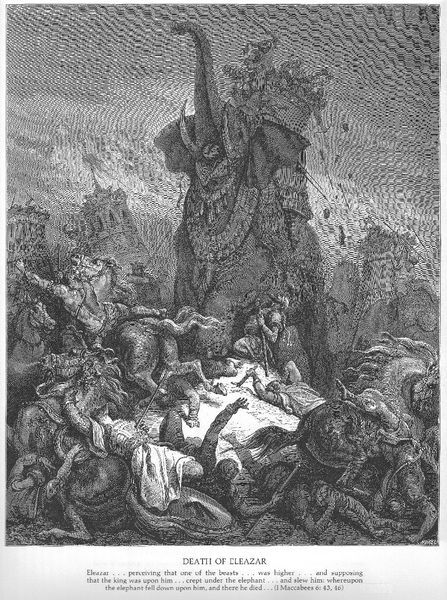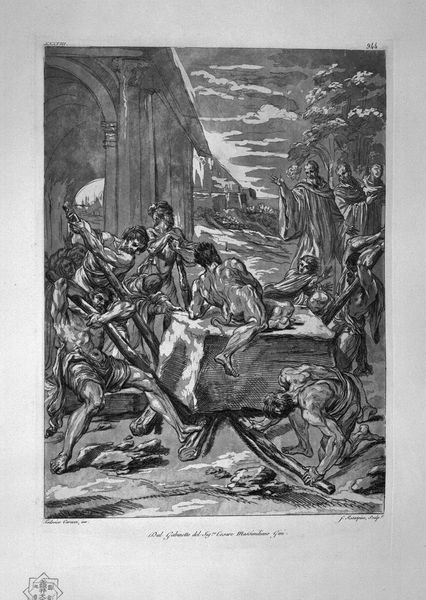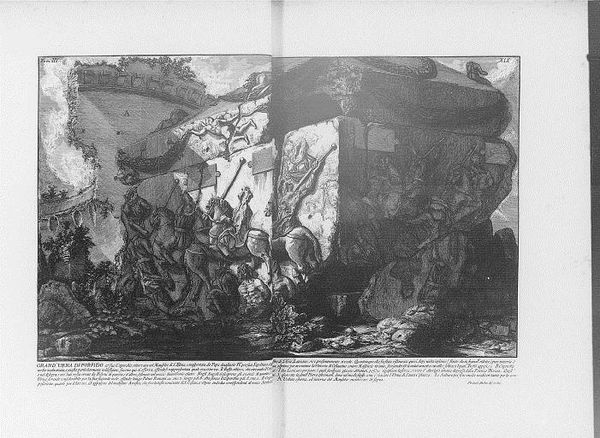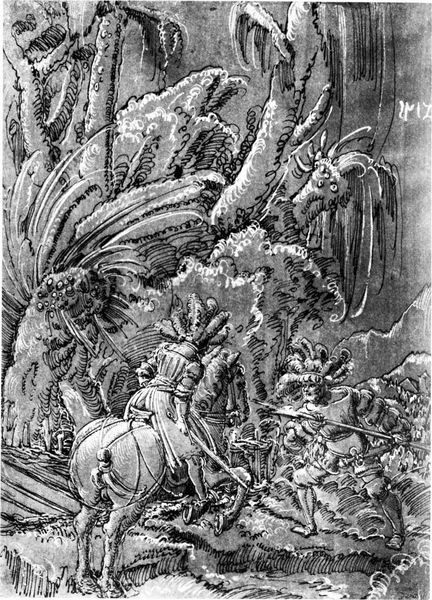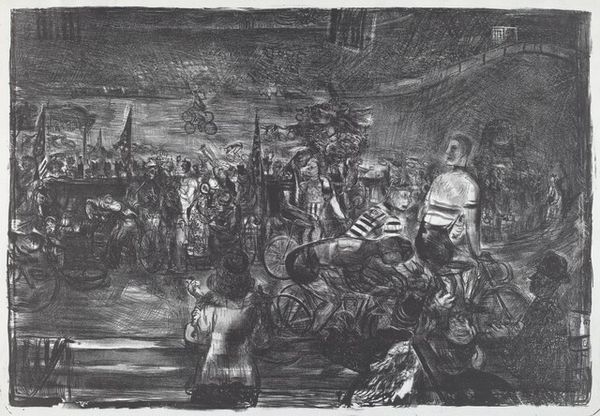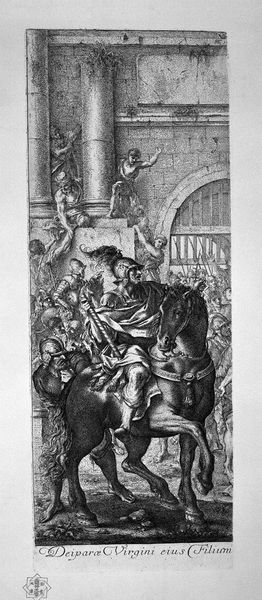
drawing, print, engraving
#
drawing
#
narrative-art
# print
#
figuration
#
soldier
#
line
#
history-painting
#
italian-renaissance
#
engraving
Dimensions: Sheet: 16 1/4 × 21 5/8 in. (41.3 × 55 cm)
Copyright: Public Domain
Georg Pencz created this engraving titled "The Capture of Carthagena by Scipio and His Troops" in the 16th century, a time when Europe was fascinated by classical antiquity and military prowess. Pencz was a German artist who spent time in Nuremberg where he was briefly jailed for his Protestant beliefs, during the Reformation. The image depicts a Roman military victory, but it is also infused with the artist's cultural context. It is worth asking how Pencz’s experiences shaped his interpretation of this historical event. Did his religious views influence the way he depicted power, conflict, and triumph in this scene? Note the bodies and ladders clambering up the fort, reflecting an emotional intensity; Pencz captures both the glory and the chaotic brutality of warfare. The bodies of the combatants are highly idealized, referencing a classical ideal, but consider whose bodies get memorialized, and whose stories are erased in this kind of representation of conquest. What does it mean to depict war in such heroic terms, and who benefits from these narratives?
Comments
No comments
Be the first to comment and join the conversation on the ultimate creative platform.
